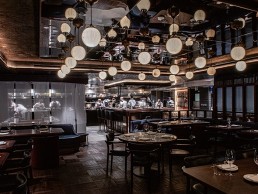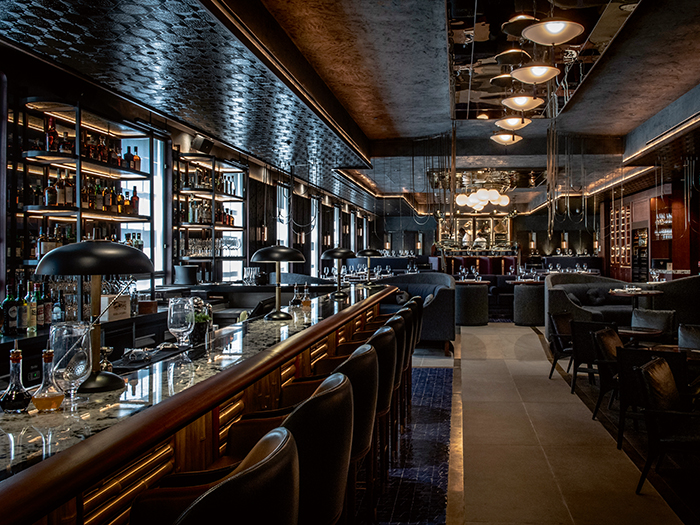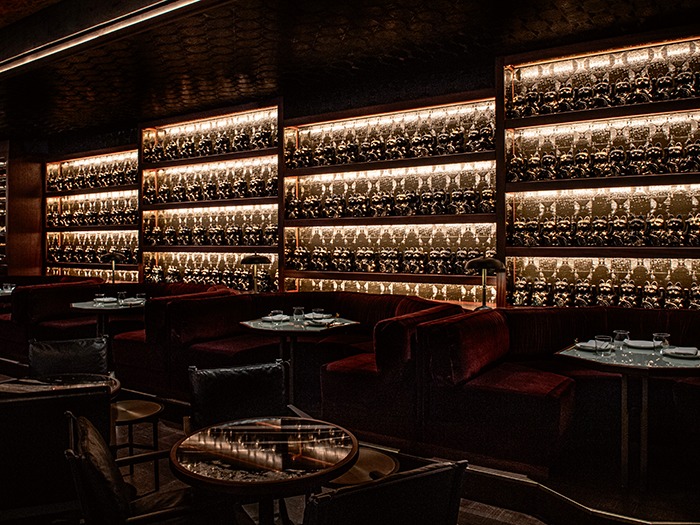
Lucky Cat, UK
The Lucky Cat is a new authentic Asian Eating House in the heart of London from Gordon Ramsay Restaurants. The category-defining interior design was completed by Afroditikrassa Studio, that transported diners back to urban drinking dens from 1940s Tokyo.
Situated on the original site of Maze, one of the Ramsay’s previously well-loved restaurants that resided there for fourteen years, Lucky Cat brings a whole new vibe and atmosphere to the developing food and beverage scene in central London.
The authentic Asian Eating House took on a restaurant-come-evening lounge design inspired by drinking dens of the 1930s and 40s in Tokyo and the Far East. Afroditikrassa design studio was approached by the restaurant group based on its rich past of category-defining hospitality design, with Dishoom, Heston Blumenthal and Itsu amongst its portfolio.
“In-keeping with the authenticity of the concept, the restaurant’s name takes inspiration from Asian culture where the ‘lucky cat’ is a talisman that is believed to attract good luck and fortune,” studio founding Director Afroditi Krassa.
Collaborating closely with Ramsay and his team, the studio worked hard to hone down the desired concept’s aesthetics, introducing a bold and creative flair with strong attention to detail that ensured diners would travel on an experiential journey from their first point of entry.
The team also paired up with Connected Lighting, which helped turn the creative brief into a tangible scheme. “Our main challenge was ensuring the space considered and welcomed both existing and new audiences,” explained Krassa. “With Mayfair’s fine dining scene experiencing a clear shift from its often-imposing interiors, the space aims to create the perfect balance of luxury, comfort as well as long-term innovation in concept and design.
“We wanted to find lighting pieces that perfectly encapsulated both the Asian Art Deco movement and the urban touch of the Japanese Kissa dens, which informed the creative direction. It was important that the lighting felt moody and atmospheric throughout, without masking the many open chefs’ tables and large kitchen within the space.”

The restaurant is a large open room divided into multiple varied-functioning areas, including a bar, restaurant and multiple chef’s tables and private dining rooms. The decorative lighting played a key role in mimicking the atmosphere of the Japanese Kissa’s that exude a dark and moody ambience. The chef’s tables have much warmer lighting radiating out that also draws attention to the skill and precision of the chef’s at work.
A selection of fittings were used from Bath-based company, Felix Lighting, as its pieces add to the continuity of the theme with its painted metals, industrial details and Art Deco influences. “Their fittings were incredibly complementary to the creative direction that we had created,” explained Krassa.
“We used the Art Deco pendant, reeded bone china globe pendants, glass bar top lights and handmade blackened steel and brass table top lamps. Alongside these sit anthracite and weathered brass School Pendants from Original BTC lighting and bronze long bulb cage wall lights from Edison Light Globes.”

During the project, some structural elements did cause issues, including low ceiling levels and numerous mechanical and electrical items, such as low hanging sprinkler points, which the team had to work around.
“The architectural lighting was used to create a perfect backdrop for our carefully chosen decorative pieces. It guided diners through the space and created warm and atmospheric pockets of intrigue,” continues Krassa.
“It was very beneficial working with a lighting consultant [Connected Lighting] who helped with the technical side of the project, ensuring we achieved the desired feel of the space.”
The overall impression of the design remained true to the team’s initial creative direction. “The lighting really helps to encapsulate the vibrant, urban atmosphere of Tokyo in the 1940s and we aimed to achieve and highlight the many smokey hues we have throughout the restaurant,” reflected Krassa.
“Diners are taken on an experiential journey from the moment they arrive, and the final impression is really for the guests to judge, whether it works and communicates the intended atmosphere and feel.”



